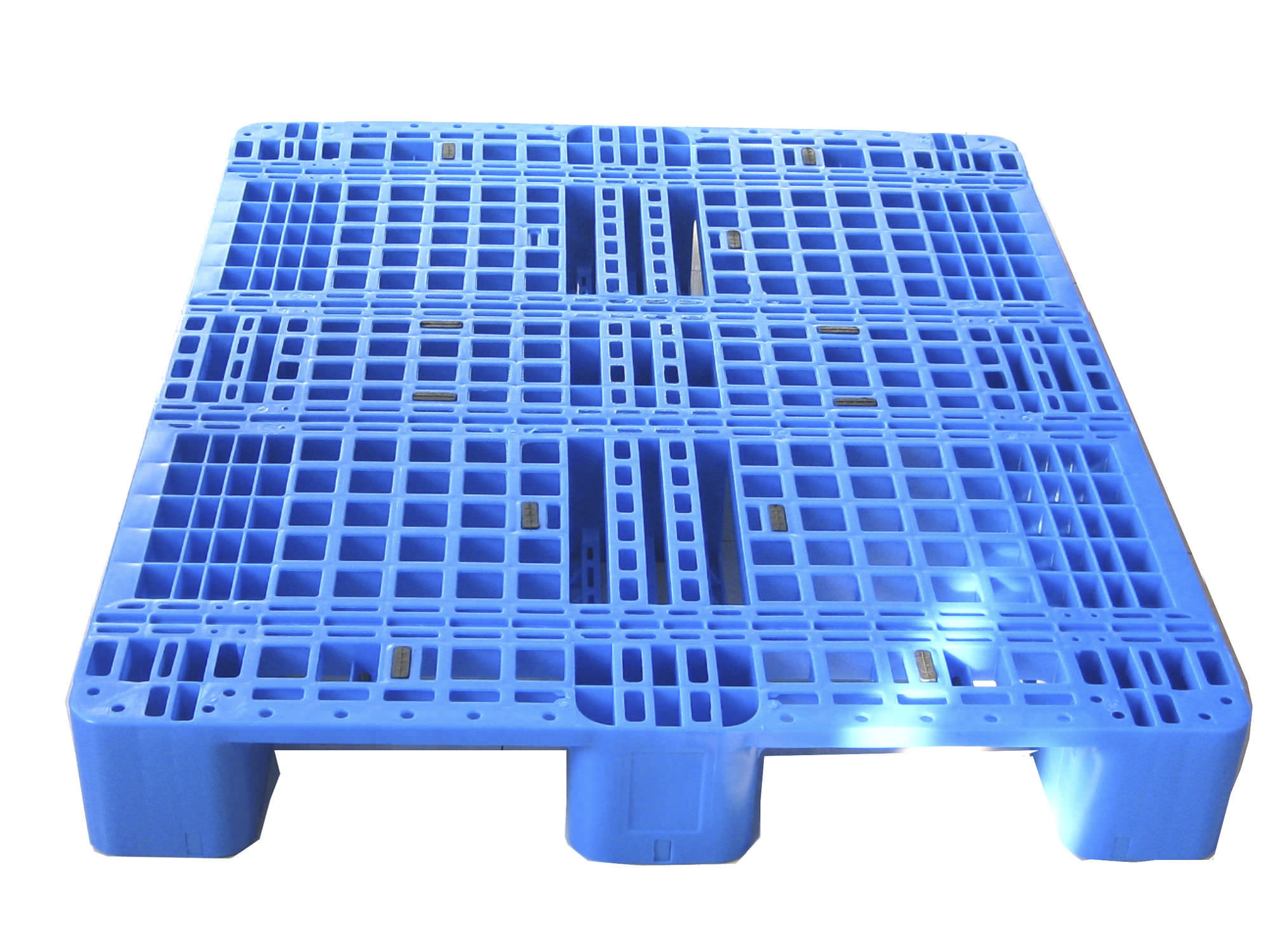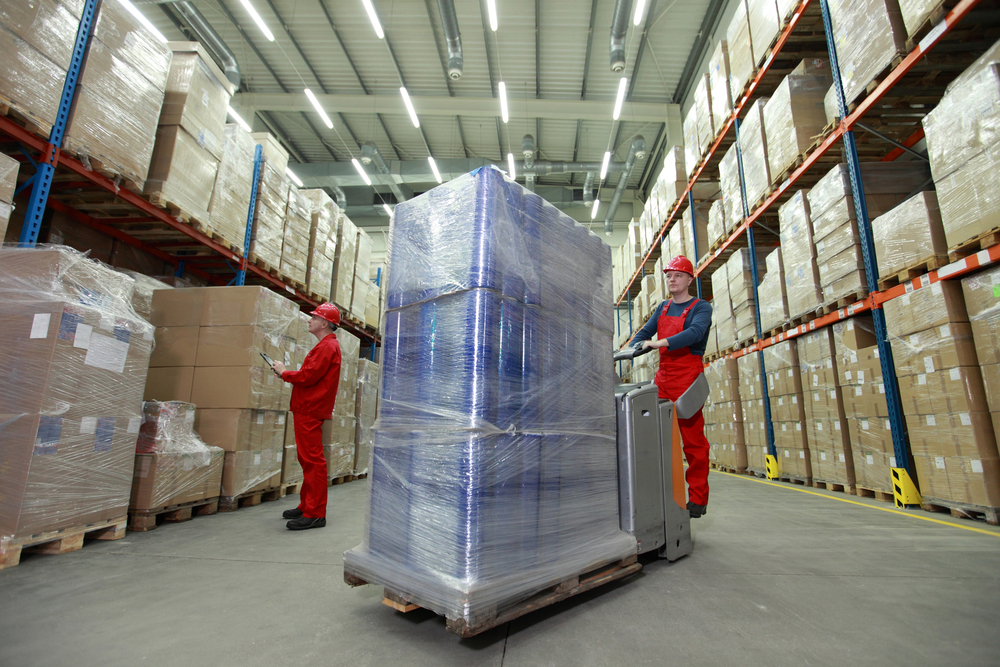
Polymers, the kings of efficiency
The long logistics chain
For many, logistics is the activity that enables the physical flows of products, whether raw materials or finished products, to be organised from their point of origin to their point of consumption. Although true, this is a rather simplistic view of the process. First of all, it is necessary to differentiate the work carried out in service of logistics from that of the supply chain. The former only concerns warehouse management, and the latter includes transportation. The globalisation of trade and the development of internet commerce mean that the logistics sector is currently particularly dynamic, and it is even considered strategic by many companies. The optimisation and streamlining of flows are now major issues. Although the organisational side of operations remains paramount, packaging and storage methods are also critical. And when it comes to shaving off a few kilograms to save fuel, plastics are a unbeatable choice.
Pallets: a symbol reinvented
It seemed like those good old pallets assembled from pine boards would never change. And it's true, they didn't. They were inexpensive, able to withstand pressures of several hundred kilos, recyclable, and more. It was hard to imagine a better alternative! Yet, their flawless reign is coming to an end. The reason: recycled high density polyethylene! In many warehouses, this new generation of pallets is slowly replacing its wooden competitor. Although the initial investment is a little more significant, it nevertheless very quickly pays for itself thanks to the strength of the polymer.

Logistics specialists believe that  traditional pallets can be recycled an average eight times before being discarded, while plastic pallets can average around twenty. But that's not all; the widespread use of plastic pallets has helped to improve working conditions and safety for employees. Plastic pallets are extremely light: 6kg versus a wooden pallet's 20kg, they are safer as there are no splinters or nails, and they are more convenient as it is possible to stack 45 empty plastic pallets in a truck, which is three times more than for wooden pallets. Finally, and this is no small thing, they can be easily dyed to the company's colours, serving as a new and high-tech medium of branding.
traditional pallets can be recycled an average eight times before being discarded, while plastic pallets can average around twenty. But that's not all; the widespread use of plastic pallets has helped to improve working conditions and safety for employees. Plastic pallets are extremely light: 6kg versus a wooden pallet's 20kg, they are safer as there are no splinters or nails, and they are more convenient as it is possible to stack 45 empty plastic pallets in a truck, which is three times more than for wooden pallets. Finally, and this is no small thing, they can be easily dyed to the company's colours, serving as a new and high-tech medium of branding.
Preventing the Pisa effect
Stacking boxes of goods on a pallet is an art in, and of, itself, and much attention is paid to levelling the crates in order to prevent them toppling over and causing thousands of Euros of damage. Not as easy as it may seem. Once again, plastics are called to the rescue. Pallets are currently enveloped in a stretchable and slightly tacky film which is actually quite similar to that used to protect food. The only difference is that it is thicker and therefore more  tear-resistant. Made from three-layer polyethylene, it guarantees the stability of the palletised loads while securing them to the pallet during transport or storage. The film is also transparent, enabling the nature of the goods transported to be immediately identified.
tear-resistant. Made from three-layer polyethylene, it guarantees the stability of the palletised loads while securing them to the pallet during transport or storage. The film is also transparent, enabling the nature of the goods transported to be immediately identified.
Cardboard loses (some) of its lustre
That said, when it comes to non-reusable packages, cardboard still has a very bright future. It is cheap and light, although it has the single disadvantage of being fragile and therefore not being able to provide adequate protection for the goods it contains. That's why such goods are often wrapped in plastic bubble wrap or surrounded by polystyrene chips. But plastics find many more uses, particularly in bins made from polypropylene, a particularly resistant and recyclable thermoplastic polymer.
Logistics experts are increasingly looking to this new generation of plastic bins, and especially for use in the field of pharmacy. Given that each pharmacy receives a delivery at least once a day, the delivery person can easily deposit their bin and recover it the next day once the products have been stacked on the shelves. Although they can be easily stacked, these new bins also have a lid that can be sealed by a polyamide lock-on tab if necessary. An RFID chip can even be integrated into the base of the bins in order to be able to trace the deliveries at all times.

© Veba MediTemp
Polymers guarantee that the cold chain is unbroken
Let's stay in the realm of packaging. Products such as vaccines and certain cosmetic creams are particularly sensitive to temperature changes and cannot withstand extremes of heat or cold. How can they be then transported to warmer countries? There are, of  course, refrigerated vehicles but they are particularly costly and are not always an optimal solution. Packaging manufacturers have turned to polymers to provide insulated boxes aimed at ensuring that a specific temperature can be maintained over a perfectly defined period of time. Polystyrene boxes have been around for a long time and they are of course perfect for wholesalers who ship their fish to locations that are sometimes several hundred kilometres away. However, they have a requirement; they must be filled with ice in order to fully make use of their isothermal capabilities. This is far from ideal for medicines and cosmetics.
course, refrigerated vehicles but they are particularly costly and are not always an optimal solution. Packaging manufacturers have turned to polymers to provide insulated boxes aimed at ensuring that a specific temperature can be maintained over a perfectly defined period of time. Polystyrene boxes have been around for a long time and they are of course perfect for wholesalers who ship their fish to locations that are sometimes several hundred kilometres away. However, they have a requirement; they must be filled with ice in order to fully make use of their isothermal capabilities. This is far from ideal for medicines and cosmetics.
As a result, a more modern type of packaging was created. It generally consists of three layers of polymers, a heat-reflecting metalised polyester, polyethylene foam and a fully inert polyethylene film approved for the transport of food o r medicine. These polymers can even be enriched with a eutectic gel, sandwiched within their internal structure, which can double the time during which a specific temperature can be maintained. This is the type of packaging used when transporting grafts for human transplants.
r medicine. These polymers can even be enriched with a eutectic gel, sandwiched within their internal structure, which can double the time during which a specific temperature can be maintained. This is the type of packaging used when transporting grafts for human transplants.
Polyester for transporting fluids
Despite their metallic appearance, many of the tanks on tankers are in fact made from a composite material combining polyester and fibreglass. And although some tanks have what seems to be a metallic finish, it's purpose is mainly to deflect light and therefore prevent the liquids they are carrying from overheating. In this case, decreasing weight is not the main issue as this composite material is not any lighter than steel. The reason for the composite taking over is primarily the fact that it is easily mouldable and therefore increases production rates. Another of its advantages is its resistance as it can withstand extremely violent impacts. Finally, this same polymer is used in mass-produced boats for its watertightness.






